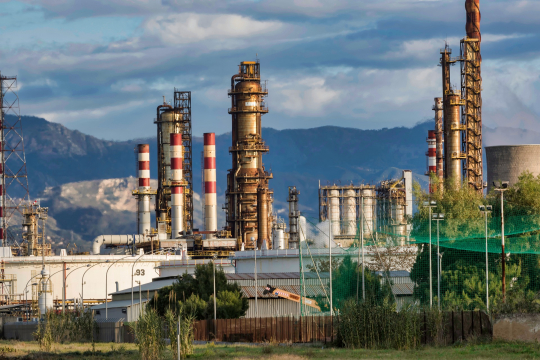Many firms don’t fully disclose the risk of their assets losing their value if climate policies are introduced. This in turn exposes investors to risks. To help those who want to invest in sustainable firms and industries, EfD researchers Samson Mukanjari and Thomas Sterner have developed a method for assessing the exposure of firms and industries to climate transition risk.
There are many reasons why one could question investments in companies with a big carbon footprint. On top of pollution and carbon emissions, those investments are also increasingly risky when climate policy is introduced. Current measures used today by investors fail to assess this correctly.
Unexploited fossil reserves
So who is most at risk? Some companies in the fossil fuel industry have begun to expand their businesses into renewable energy sources, but many of them have hardly diversified at all. That makes them highly vulnerable when ambitious climate policies are introduced.
“As long as companies or countries have large, unexploited fossil fuel reserves in the ground, the incentives to diversify are low. But they run a great risk if climate policies were to get more ambitious,” says Samson Mukanjari.
Want to support their growth
“The biggest emitters, such as transportation, industry, and electricity sectors are other examples of industries who will be significantly affected by carbon pricing,” he says.
There are many reasons why investors may not leave the carbon-intensive industries at the required pace. Some feel that the global climate policies have unrealistic time frames – that it’s not possible to decarbonize at that pace, so fossil fuels will be needed much longer. Investors may also feel that they can "lobby down" tougher climate policies. In addition, many countries with abundant fossil fuel deposits still actively promote the exploitation of these resources to support their economic growth.
Inconsistent criteria
Yet, many investors demand greater disclosure of firms’ exposure to climate risk. The existing measures to guide investors have significant shortcomings. Investors who care about the environment have to rely on the “E” in EGS ratings (environmental, social, and governance) and measures such as carbon intensity. However, there are several challenges with those ratings. For one thing, E and ESG ratings are criticized for being inconsistent between different rating agencies, and different firms use different methods to measure their carbon footprint.
The environmental score in ESG ratings includes many different criteria, such as greenhouse gas emissions, resource use, recent environmental controversies, environmental performance, whether a firm has a climate change policy, etc. The importance of each of these in determining the final score is usually not disclosed by the rating agencies and may vary from one rating agency to another. In addition, rating agencies may not use the same criteria altogether. The criteria appear quite subjective and arbitrary.
Stranded assets
“The reliance on ESG ratings has also led to a rise in greenwashing. With no regulations or established standards on how to measure sustainability, firms may appear better than they are,” says Samson Mukanjari.
For the investor, there is not only the risk for stranded assets, such as when coal and oil reserves can’t be exploited as planned.
Even without an ambitious climate policy, damages from severe storms, heatwaves, and other natural disasters are already occurring more often. Firms in the insurance sectors, real estate, and food production are the most exposed to these risks.
Sued oil companies
In addition, companies are increasingly exposed to liability risks from parties that suffer damages due to the effects of climate change. An example is the cities of San Francisco and Oakland who sued five big oil companies for the harm they have inflicted and the costs for protecting the sea walls and other climate damage costs that the cities have incurred.
There is already some evidence that stock markets may price climate risks inefficiently without full disclosure of corporate exposures.
Suggest better method
“If more ambitious climate policies are implemented everywhere, there is a risk that exposure to assets that might be affected can trigger financial instability,” warns Samson Mukanjari.
So how can one do a better job in assessing the climate risk when investing in a certain company?
The method that Samson Mukanjari and Thomas Sterner propose is based on using changes in a firm’s stock price within a few days around unexpected climate news. By using historical data on how a company’s stock price has reacted to climate policy events after controlling for market-wide effects on all firms’ returns during the event period, one will get information on how climate-resilient that particular company is at least from the perspective of investors.
“Our approach has the advantage that it should reflect all relevant information concerning whether a company will thrive under stricter climate policy or fall in the category of stranded assets,” says Samson Mukanjari.
Their method will be presented in a research report that is planned to be published, hopefully in the fall of 2021.
By: Petra Hansson

